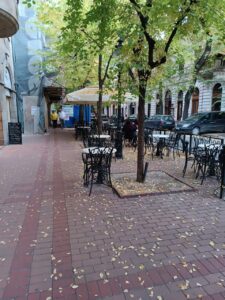How to best preserve historical elements during the renovation of old buildings in Subotica
Subotica, a city in northern Serbia, is renowned for its rich architectural heritage, showcasing a blend of styles influenced by various cultures over the centuries. As urban development continues to progress, the challenge of preserving historical elements during the renovation of old buildings becomes increasingly significant. This article explores effective strategies for maintaining the integrity of Subotica’s architectural legacy while accommodating modern needs.
Understanding the Historical Context
To effectively preserve historical elements during renovations, it is crucial to understand the historical context of the buildings in question. Each structure tells a story, reflecting the architectural trends, materials, and craftsmanship of its time. Conducting thorough research into the building’s history, including its original design, purpose, and any significant alterations made over the years, provides a solid foundation for informed decision-making.
Engaging with local historians, architects, and preservationists can offer valuable insights into the building’s significance within the community. This collaborative approach ensures that renovations respect the original character and style of the building, preventing the loss of unique features that contribute to Subotica’s cultural identity. By appreciating the historical context, renovators can make choices that honor the past while accommodating contemporary needs.
Furthermore, understanding the historical context allows for the identification of key architectural elements that should be preserved or restored. This may include decorative facades, original windows, or unique structural components. By prioritizing these features, renovators can maintain the building’s authenticity and contribute to the overall preservation of Subotica’s architectural landscape.
Employing Appropriate Materials and Techniques
The choice of materials and techniques used during renovations plays a pivotal role in preserving historical elements. It is essential to select materials that are compatible with the original construction, both in terms of aesthetics and functionality. For instance, using traditional plaster, brick, or wood can help maintain the building’s historical appearance while ensuring structural integrity.
Additionally, employing skilled craftsmen who specialize in traditional building techniques can significantly enhance the quality of the renovation. These artisans possess the knowledge and experience necessary to replicate historical details accurately, ensuring that any repairs or restorations are in line with the original design. Their expertise can also help identify potential issues that may arise during the renovation process, allowing for proactive solutions that safeguard the building’s historical elements.
Moreover, utilizing modern technologies, such as 3D scanning and digital modeling, can aid in the preservation process. These tools allow for precise documentation of existing conditions, enabling renovators to create accurate replicas of historical features that may be damaged or missing. By combining traditional craftsmanship with modern technology, renovators can achieve a harmonious balance between preservation and innovation.
Engaging the Community and Stakeholders
Community engagement is a vital component of successful preservation efforts in Subotica. Involving local residents, business owners, and cultural organizations in the renovation process fosters a sense of ownership and pride in the city’s architectural heritage. Public consultations and workshops can provide valuable feedback and insights, ensuring that renovations align with the community’s values and aspirations.
Collaboration with local government and preservation organizations can also enhance the effectiveness of renovation projects. These stakeholders often have access to resources, funding opportunities, and expertise that can support preservation efforts. By working together, renovators can navigate regulatory requirements and secure necessary permits while promoting awareness of the importance of preserving historical elements.
Furthermore, showcasing successful renovation projects can inspire others in the community to prioritize preservation in their own endeavors. By highlighting the benefits of maintaining historical elements—such as increased property values, enhanced tourism, and a stronger sense of identity—renovators can encourage a collective commitment to safeguarding Subotica’s architectural heritage for future generations.
Preserving historical elements during the renovation of old buildings in Subotica is a multifaceted endeavor that requires careful consideration of historical context, appropriate materials and techniques, and community engagement. By prioritizing these aspects, renovators can ensure that the city’s rich architectural legacy is honored and maintained. As Subotica continues to evolve, a commitment to preservation will not only enhance the city’s aesthetic appeal but also strengthen its cultural identity, making it a vibrant place for both residents and visitors alike.


